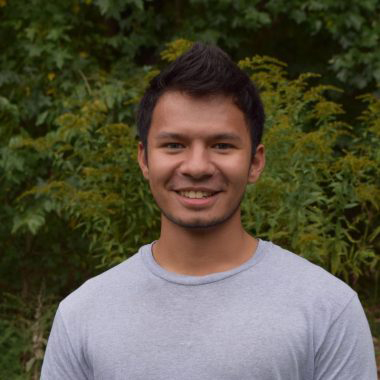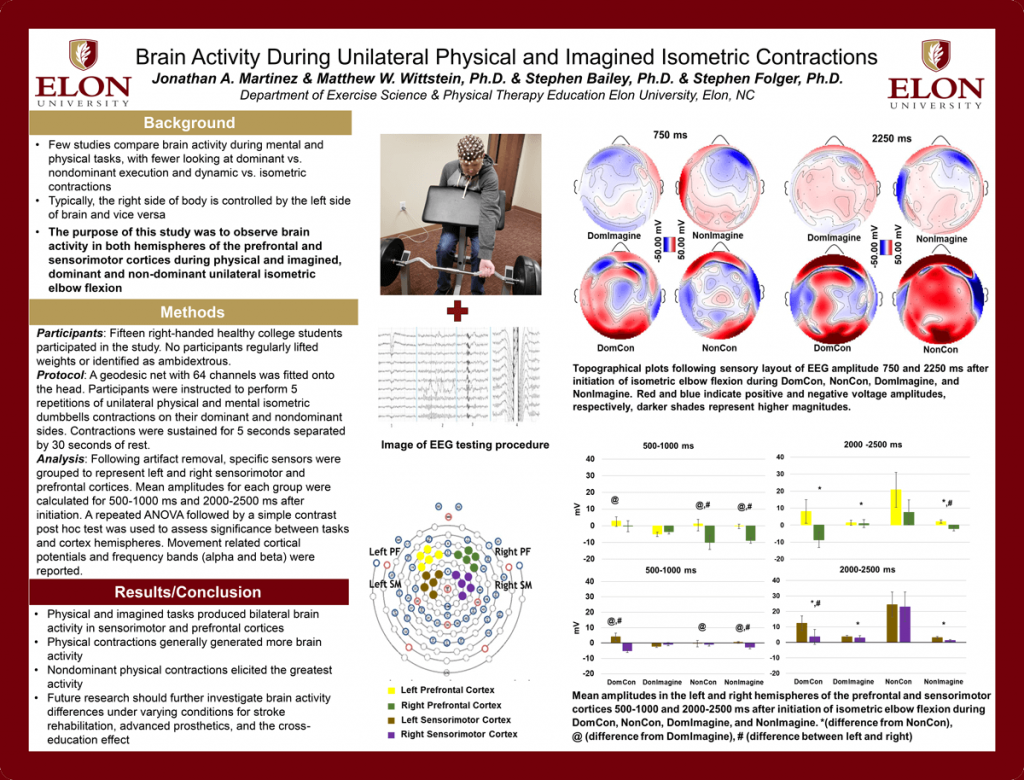Jonathan Martinez
Class of 2020
- Exercise Science

Brain Activity During Unilateral Physical and Imagined Isometric Contractions
Project Mentors:
- Matthew Wittstein, assistant professor of exercise science
- Stephen Bailey, professor of physical therapy education
Project Abstract
Past studies measuring brain activity within the prefrontal and sensorimotor cortices primarily recorded changes before and after an intervention is performed on one side of the body within one hemisphere (usually the contralateral) of the brain. For example, Ranganathan and colleagues in 2004 found brain activity to increase by 20% in the sensorimotor cortex after a twelve week long mental and physical finger training intervention. The purpose of this investigation was to observe the brain activity within the left and right hemispheres of the prefrontal and sensorimotor cortices during physical and imagined, dominant and non-dominant unilateral sustained elbow flexion. Fifteen right hand dominant individuals (6 male and 9 female) with an average age of 19, performed four different isometric contractions of their biceps brachii at a preacher curl bench: dominant arm physical contraction (DomCon), non-dominant arm physical contraction (NonCon), dominant arm imagined contraction (DomImagine), and nondominant arm imagined contraction (NonImagine). Each contraction was sustained for five seconds followed by thirty seconds of rest. Electric potential recordings and frequency bands displayed bilateral activation within the sensorimotor and prefrontal cortices across all tasks, the greatest being observed in the NonCon condition. Both motor activity-related cortical potential and frequency bands across all tasks elicited distinct peak projections at approximately 500 ms after stimulus. Further understanding of bilateral activity through unilateral tasks is valuable for improving rehabilitation practices through mental and physical exercise.
 Download Project Presentation
Download Project Presentation